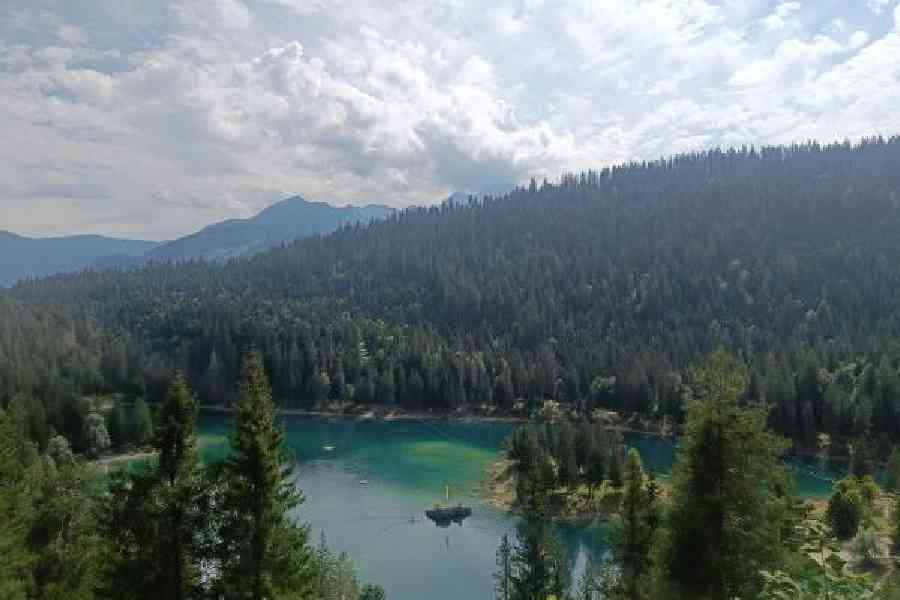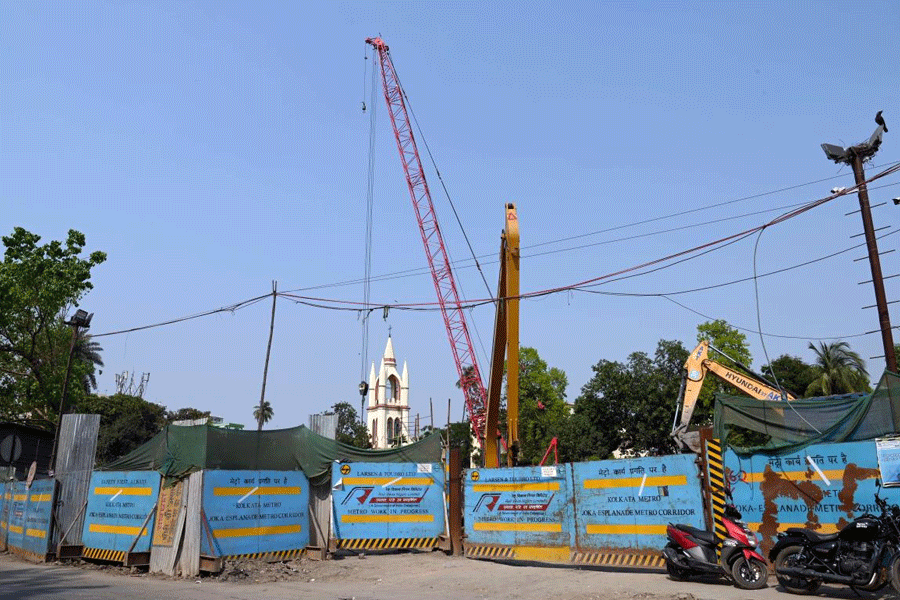Any place which has (re)LAAX in its name has preempted your itinerary even before you get to it — a picturesque winter ski town in Switzerland where ‘chilling’ is the primary agenda. Which is cue enough to get my feeble attempt at punning out of the way and take a deep ‘dive’ (there we go again!) into LAAX.
A charming, picture-postcard municipality in the Swiss canton of Graubünden, it takes some work to get to LAAX. Which is simply staring out of the window on a jaw-dropping, scenic train ride from Zurich that takes you past sun-kissed lakes, symmetrically undulating mountains and verdant meadows that seem straight out of a children’s book. No surprise then that it is my favourite childhood read — Johanna Spyri’s Heidi, the classic story of an orphan girl living in the Swiss Alps — that every minute of my time in LAAX, that I visited a few weeks ago, reminded me of. Heidi was published in 1880, and if a town — touched as it is now by the inevitability of modernism and tourism — has the ability to transport you 150 years back in time, there is something precious about it that needs holding on to.
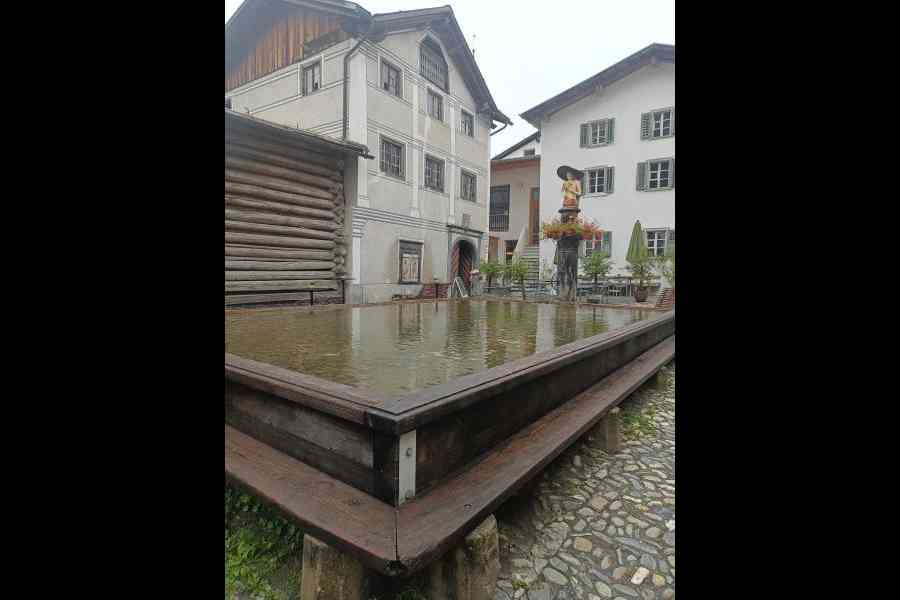
The well at Valendas is a wooden fountain, considered the largest in Europe, that can hold up to 15,000 litres of water
LAAX truly is special. There is a certain calmness about this town — which seems to be suspended in time — that greets you as soon as you set foot on it.
A premier destination for freestyle skiing and snowboarding, with a large ski area that includes terrain parks and 220km of slopes, LAAX is topographically blessed. While it attracts its major tourist count in winter (but, naturally), LAAX — boasting an eclectic abundance of history, geography, gastronomy, adventure and more — is fast emerging as a go-to destination even during the rest of the year. Its website aptly describes LAAX as: “The world-famous freestyle mecca in the Swiss Alps. A place where freestyle, lifestyle and greenstyle meet.” It is, in fact, considered a birthplace of freestyle skiing and snowboarding.
There is so much to experience here. Using the sprawling Rocks Resort — a four-star address which is actually a set of serviced apartments that gives one the feeling of being at home but in far more eye-pleasing surroundings — as my base, I took in the sights and sounds of LAAX, and beyond, hopping on to a bus every now and then for a ride to Flims, a quaint town a few miles away, which looked straight out of a nostalgia novel. Located as it is against the picture-perfect backdrop of the magnificent Fil de Cassons mountains, Flims’ architecture — homes, churches, boutiques and pubs — will not only keep your camera busy but also transport you into another world.
Bathed in beauty
I arrived at LAAX only to be told by every local I met there that the weather gods were somehow pleased with me. It had been incessantly raining the whole week but the sun decided to make an appearance — quite an intense, powerful one at that — on that day. Pretty chuffed, I made my way to what is undoubtedly at the top of the list for every visitor to LAAX — Lake Caumasee. Comprising every shade of turquoise on a paint brochure (and many that are almost impossible to replicate from nature to walls), Caumasee is a sight to behold. With even the slightest movement, the sun glistened magically on the ginormous lake. It was a weekday afternoon, but Switzerland’s unflinching commitment to work-life balance (often, more life than work) meant that hordes of locals — children swimming or paddling around, adults sunning themselves, gangs of friends enjoying a beer or an ice popsicle, infants in their perambulators getting a spot of Vitamin D... it truly is a happy place.
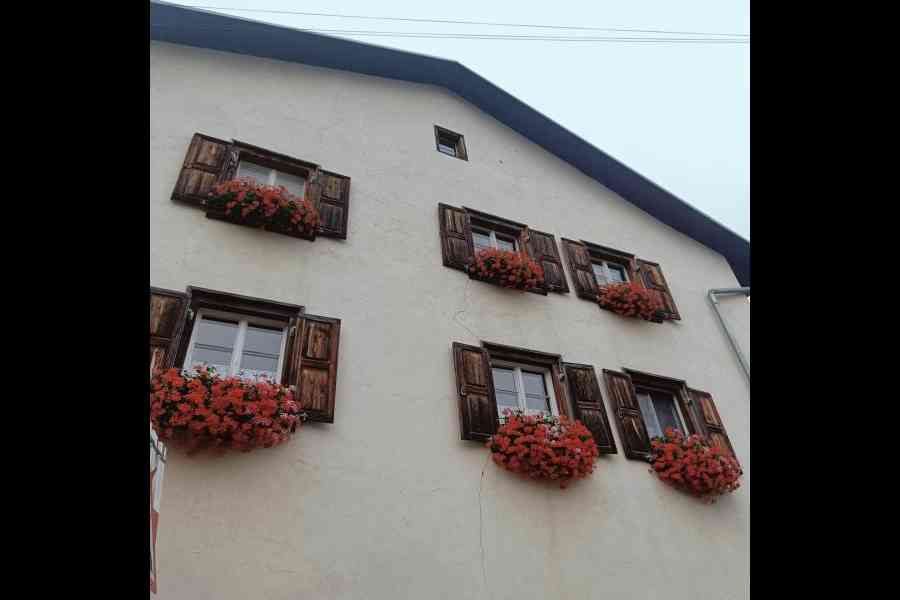
The frontage of most homes in LAAX and its vicinity are dotted with seasonal blooms
There is a special way of getting to Lake Caumasee — and this is where the #timetravel bit hits hard. A ride down a self-service lift, which has old-world charm written all over it, involves slowly winding one’s way 125m down the hill. It takes your breath away, with Lake Caumasee revealing its blues and greens — cerulean, celadon, azure, jade — in all its glory.
Nature doing its thing
Another top attraction in LAAX is the Rhine Gorge, also known as the “Ruinaulta” in the local Romansh language. Described as the “Swiss Grand Canyon” — one look at it will tell you why — it is a popular area for hiking and rafting, drawing enthusiasts from all over the world. It offers spectacular views — it rained the day I paid a visit, which somehow made the experience even better instead of washing it out.
Accessible by public transport or on foot, the canyon was formed by a massive landslide over 9,500 years ago and is characterised by high limestone cliffs. A treacherously slippery terrain meant that my hiking plans for the day had to be abandoned, but I was content to simply take in the views through the mist that enveloped the gorge, one that was made even better by the sight of trains making their way through it. If you happen to land up on a non-rainy day, there is a gamut of activities — mountain biking to canoeing to rafting — to sweat it out with.
The simple life
While LAAX itself has a calming effect, I recommend motoring down to a few villages in its vicinity. Unending meadows, pristine lakes, the tolling of church bells, cattle leisurely ruminating in the fields... this is not only a sight for sore eyes but also succour for the soul.
Valendas is one such. Beautifully distinguished by its cobbled streets, the eye-catching facades of its homes (almost all homes in this part of the country have gorgeous flowers dotting the frontage) and well-preserved churches, Valendas is a lovely spot to spend a few hours at. Its biggest claim to fame is the “well” — a wooden fountain, considered the largest in Europe. Built in 1760, but looking none the worse for it, it has a basin measuring about 8m x 5m and holds approximately 15,000 litres of water. No matter how much you have tired yourself out, a few sips of the water from here is enough to refresh instantly.
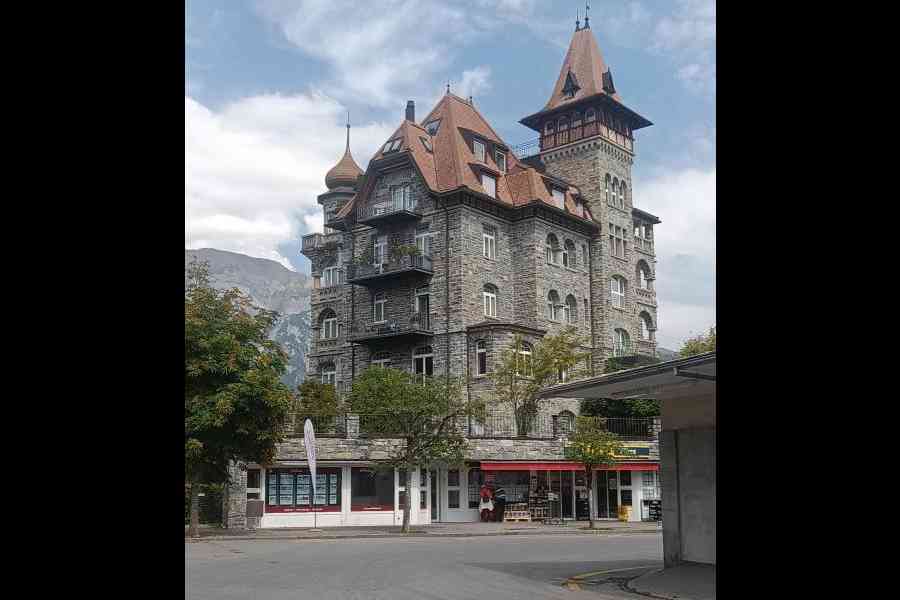
LAAX is known for its old-world and well-preserved architecture
A must-visit while in LAAX is Bargis. A unique car-free valley in the Swiss Alps, located in Flims, Bargis has the kind of scenic topography that will instantly remind you of Maria and the von Trapp children picnicking, singing and dancing with abandon in The Sound of Music. I would have perhaps broken into a bit of a jig too, if it wasn’t for the rain pelting down heavily. What gets better than a walk through the foggy paths of Bargis? Dropping in at the Berghaus Bargis, a quaint and inviting inn that welcomes you with tall mugs of piping hot chocolate (#FTW, there is also a version with alcohol). As I sipped on mine and stared at the mountains through a window above the fireplace, I thought to myself: “Now this is the dream life.” Until the owner of the inn, a polished, chatty lady told me she had given up her job at a Swiss bank to run the inn. I looked down at my dish of Capuns and slurped it silently. Now that is a dream, if there ever was one.

